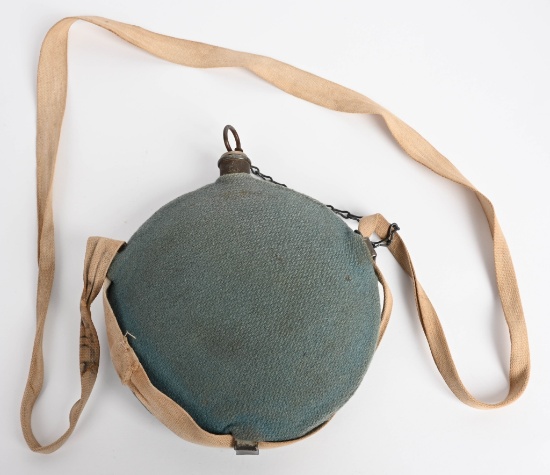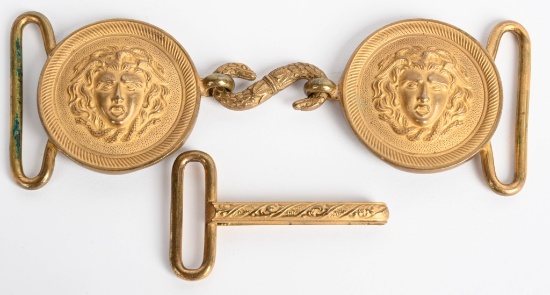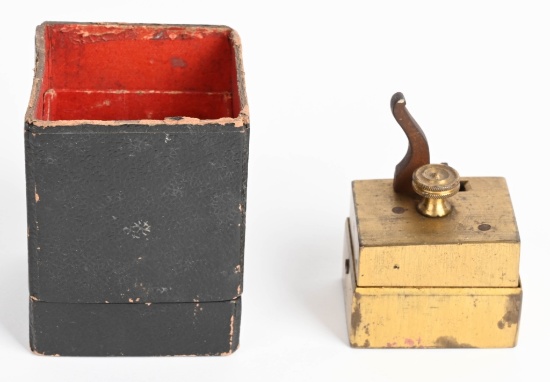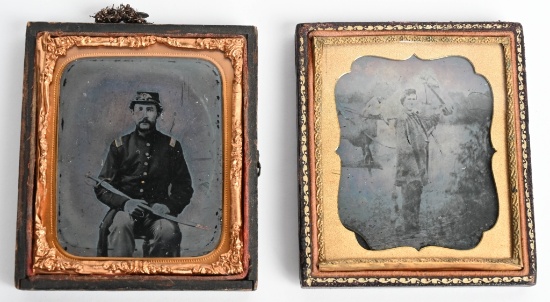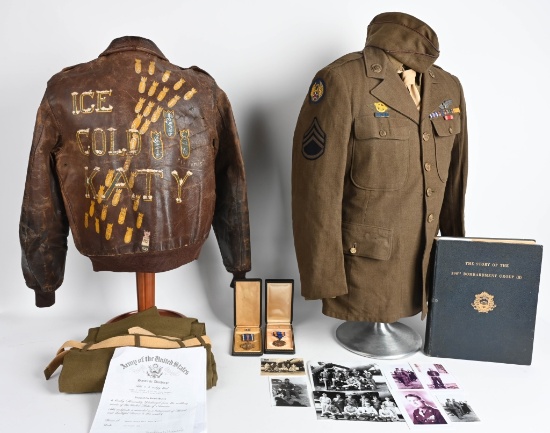
WINTER MILITARIA AUCTION

WINTER MILITARIA AUCTION
See Special Terms for additional fees
Cash Payment Discount: 3%
Description
PROUDLY PRESENTS
WINTER MILITARIA AUCTION
990 PLUS LOTS OF MILITARIA from the 18TH to the 20TH CENTURY. 25 PLUS LOTS of CIVIL WAR INCLUDING SWORDS, GROUPINGS, IMAGES and MORE;
WW1 and WW2 US GROUPINGS, EDGED WEAPONS, HELMETS, MEDALS, FLAGS, UNIFORMS, INSIGNIA, PATRIOTIC POSTERS and MORE. 35 PLUS LOTS of IMPERIAL GERMAN SWORDS, HEAD GEAR, MEDALS and MORE. 390 LOTS of WW2 NAZI GERMAN ITEMS INCLUDING a WAFFEN SS OVERSEAS CAP, SS OFFICERS SWORDS, HEINRICH HIMMLER SS IRON CHEST, ADOLF HITLER FLATWARE, SS 25 YEAR AWRD, NAZI GERMAN ORG, TODT HELMET, BADGES, MEDALS, INSIGNIA, HELMETS, UNIFORMS, SWORDS, BAYONETS, ACCOUTREMENTS and MUCH MUCH MORE! JAPANESE KATANA SWORDS, TANTOS, FLAGS, MEDALS, BADGES and MORE. KOREAN AND VIETNAM WAR LOTS and MORE!!
SATURDAY DECEMBER 12th 2020
10:00 AM
"FULL CATALOG & LIVE BIDDING AVAILABLE THRU"
WWW.MILESTONEAUCTIONS.COM LIVEAUCTIONEERS, PROXIBID, & INVALUABLE
PHONE BIDS & ABSENTEE BIDS Call 440-527-8060
AUCTION... Show more Show Less
Cash Payment Discount: 3%
Participation Requirements: Valid Credit Card required for bidding approval
Payment Options: Visa, MasterCard, Discover, American Express, Check, Money Order, and Wire Transfer
Visa MasterCard Discover American Express
Payment Instructions: SALES TAX All buyers will pay applicable state sales tax. Sales Tax will be charged unless the item is being shipped out of state or the buyer provides a current state exemption form. PAYMENT All merchandise must be paid in full within ten (10) days of the date of the sale. Purchases totaling $20,000 or more must be paid within three (3) days of the date of the sale. Call 440-527-8060 to pay your invoice by phone or mail payment to: 38198 Willoughby Parkway, Willoughby Ohio, 44094. Absentee bids placed through www.milestoneauctions.com and Proxibid.com will be auto charged to the credit card entered 48 hours after the end of the sale. If you wish to pay by another method please contact us within 48 hours after the sale. CREDIT CARD - For first time buyers and credit card charges greater than $2,500.00 buyers must complete the bottom portion of the invoice and must specifically sign the acknowledgement of our terms of sale before we will accept payment via credit card. We do offer the convenience of paying automatically by credit card. If you wish have your card automatically charged for all purchases please complete our Authorization for Automatic Credit Card Use. We have this form available upon request. Split payments are subject to a 20% buyers premium if a credit card is used as any form of total payment. CHECK - There will be a $30.00 service charge for returned checks. Make checks payable to: Milestone Auctions LLC. Milestone Auctions reserves the right to hold items paid for by personal or company check until said check clears (14 days). Milestone Auctions has the right to hold all checks over $2,000.00. Customers who have an established successful buying history with Milestone Auctions may be exempt from this. In the few situations where a successful bidder does not remit payment when due, Milestone Auctions will proceed with the legal steps necessary to protect its interests and will block the bidder from future auction participation.
Currency Type: USD
Shipping Instructions: Please see our terms and conditions.
Preview Date & Times: Items are available for preview 7 days prior to the sale by appointment. Auction day preview is December 12th at 8AM.
Checkout Date & Times: Please contact the auction company for checkout dates & times.
Location: 38198 Willoughby Parkway, Willoughby, OH 44094
Driving Directions:

By clicking "Confirm Buy" you are agreeing to the terms of the sale. Instant Purchase items may have additional fees such as an Internet Premium, Sales Tax, Shipping or other fees not included in the Instant Purchase price. Please see Auction Information for full details.
Payment Type:
CIVIL WAR STAFF AND FIELD OFFICERS SWORD
Lot # 1 (Sale Order: 1 of 987)
EARLY FRENCH HORSE HAIR & PLUME CUIRASSIER HELMET
Lot # 2 (Sale Order: 2 of 987)
1840's AMERICAN EAGLE HEAD SWORD BY WIDMANN
Lot # 3 (Sale Order: 3 of 987)
AMERICAN 1840 PERIOD INFANTRY OFFICERS SWORD
Lot # 4 (Sale Order: 4 of 987)
MEXICAN WAR 1838 FIELD MANUAL FOR THE ARTILLERY
Lot # 5 (Sale Order: 5 of 987)
CIVIL WAR BRITISH 1859 NAVAL CUTLASS BAYONET
Lot # 6 (Sale Order: 6 of 987)
CIVIL WAR 114TH OVI PRESENTATION OFFICERS SWORD
Lot # 7 (Sale Order: 7 of 987)
ID'D NAMED CIVIL WAR OHIO 7TH CAVALRY FROCK COAT
Lot # 8 (Sale Order: 8 of 987)
OHIO CIVIL WAR 106TH OVI GROUPING CORPS BADGE CDV
Lot # 9 (Sale Order: 9 of 987)
ANTIQUE CIVIL WAR UNION PLAYING CARDS 1863 W/ BOX
Lot # 10 (Sale Order: 10 of 987)
CIVIL WAR M1858 SMOOTHSIDE CANTEEN W/ COVER SLING
Lot # 10a (Sale Order: 11 of 987)
UNIFORM GROUPING OF GENERAL GRANT'S HONOR GAURD
Lot # 11 (Sale Order: 12 of 987)
CIVIL WAR US NAVY CUTLASS M1860 DR INSPECTED 1862
Lot # 12 (Sale Order: 13 of 987)
10 SEC. 1863 FRANKFORD ARSENAL CANNON SHELL FUZES
Lot # 12a (Sale Order: 14 of 987)
CIVIL WAR 26th OVI DIARY CONFEDERATE EXCHANGE DOC
Lot # 13 (Sale Order: 15 of 987)
CIVIL WAR AMES U.S. MODEL 1840 NCO SWORD SCABBARD
Lot # 14 (Sale Order: 16 of 987)
CIVIL WAR MUSICIAN SWORD BY AMES 1864 ADK INSPECTD
Lot # 15 (Sale Order: 17 of 987)
EARLY FRENCH 2ND REPUBLIC MEDUSA BELT BUCKLE
Lot # 15a (Sale Order: 18 of 987)
CIVIL WAR 72ND OHIO FIELD TABLE COMPANY A OVI
Lot # 16 (Sale Order: 19 of 987)
CIVIL WAR NAMED REGIMENTAL FIELD DESK 72nd OVI
Lot # 17 (Sale Order: 20 of 987)
CIVIL WAR IMAGES AND ID'ed CAPTAIN STRAPS 72nd OVI
Lot # 18 (Sale Order: 21 of 987)
CIVIL WAR ID'ED GROUPING OF 72ND OVI OFFICER
Lot # 19 (Sale Order: 22 of 987)
CIVIL WAR TINTED IMAGE OF A FEDERAL ENLISTED MAN
Lot # 20 (Sale Order: 23 of 987)
RARE CIVIL WAR BLEEDER w/ BOX SCARIFICATOR IN BOX
Lot # 20a (Sale Order: 24 of 987)
2- CIVIL WAR AMBROTYPES, OFFICER w/ SWORD
Lot # 20b (Sale Order: 25 of 987)
| Bid Range | Increment |
| $0.00 - $299.99 | $10.00 |
| $300.00 - $999.99 | $25.00 |
| $1,000.00 - $1,999.99 | $50.00 |
| $2,000.00 - $4,999.99 | $100.00 |
| $5,000.00 - $9,999.99 | $250.00 |
| $10,000.00 - $24,999.99 | $500.00 |
| $25,000.00 - $49,999.99 | $1,000.00 |
| $50,000.00 - $99,999.99 | $2,500.00 |
| $100,000.00+ | $5,000.00 |

 x Cancel
x Cancel









